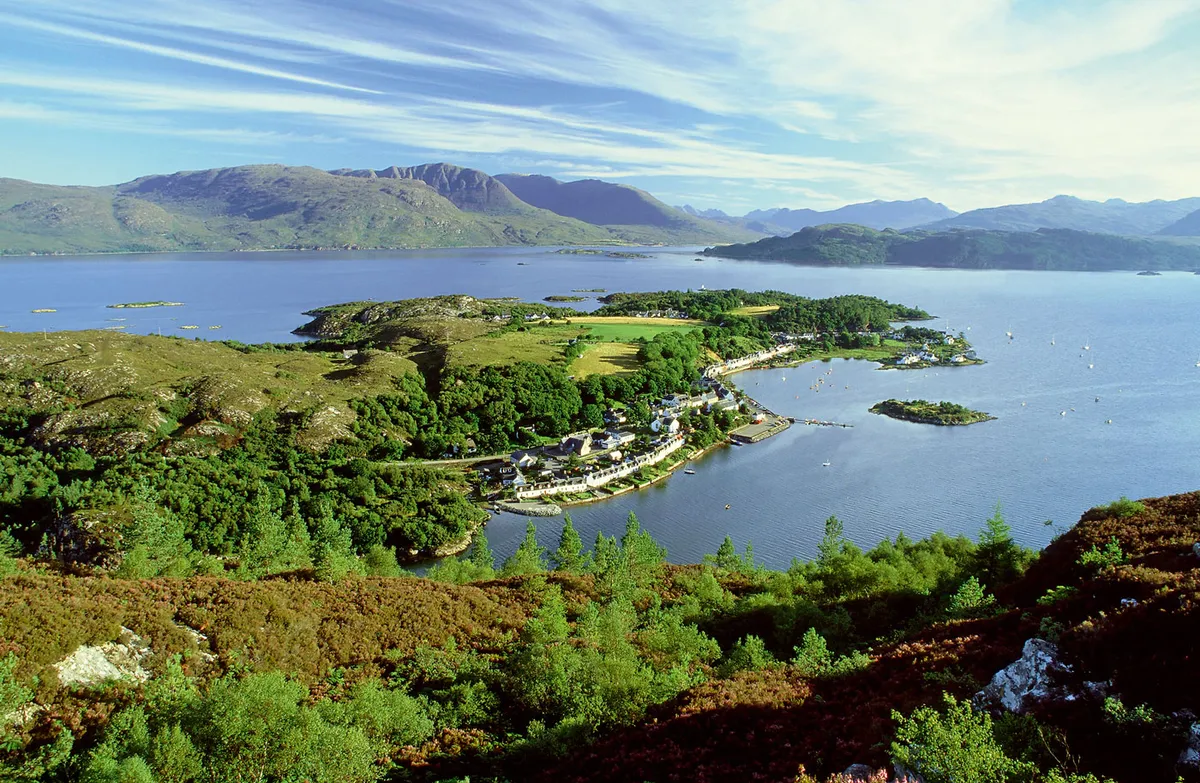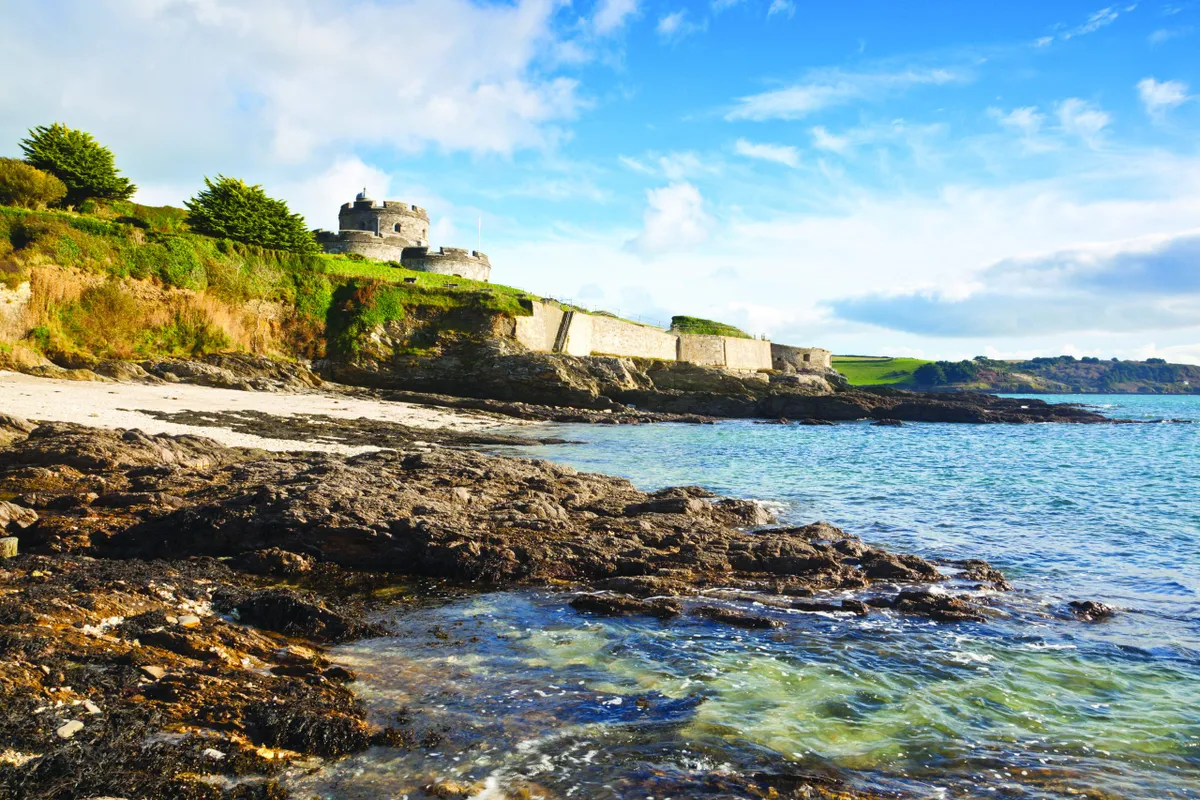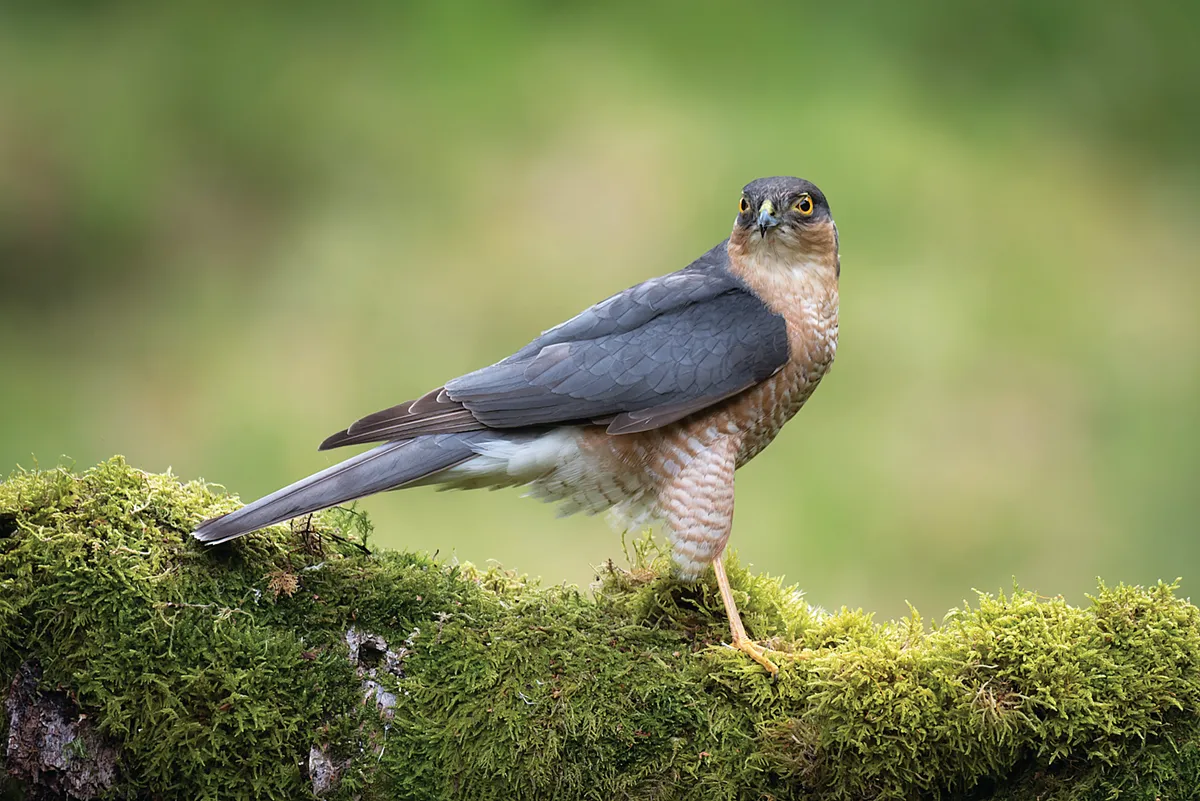July is a wonderful month to be out in the countryside. Our meadows are full of wildflowers, rivers glisten beneath a high sun and rockpools flicker with life.
From secluded coves and beaches to coastal flowers, wildlife, dunes and sailing boats, we’ve come across some amazing photography while putting together the July 2021 issue of BBC Countryfile Magazine. Celebrate the month with a few of our favourite images.
Enjoy summer wildlife and nature with our gallery of beautiful photographs from around the UK countryside in July.
Basking in beauty

Snorkel with basking sharks off the shores of the Isle of Coll in the Inner Hebrides during July and August. A marine biologist skippers the boat ride to wildlife hotspots (£195pp for a day trip). baskingsharkscotland.co.uk
Remote Bay

At low tide, explore the creatures sheltering among the seagrass and kelp by the headland at the north of Gruinard Bay in Ross and Cromarty. Admire the beds of rare maerl – a hard, purple-pink seaweed that forms ‘carpets’ along this section of the North West Highlands Snorkel Trail.
Pretty Plockton

Warmed by the gulf stream, picturesque Plockton combines huge mountain views and seascapes with Gaelic village life. White-washed cottages and palm trees line the shore, illuminated by a unique light so beloved by artists and photographers around the world. If you think this village is almost too perfect to be natural, you are right: Plockton was a planned fishing village, conceived by the local laird at the end of the 18th century in an attempt capitalise on rich herring stocks.
Sixth-century castle

One of the largest inhabited castles in England, Bamburgh has a fascinating history spanning 1,400 years. In the sixth century, the Northumbrian kings chose to site their capital on this mighty escarpment, building fortifications and, later, a monastery.
St Mawes magic

If you tear yourself away from the eye-watering views at St Mawes Castle – built in 1540 by Henry VIII – and head north, you stand a chance of spotting another coastal splendour: the cirl bunting. Once widespread across the south of England, by the late 1980s – due to a loss of its favoured, traditionally managed, mixed farm habitat – it was in danger of disappearing as a British breeding bird.
Thankfully, a long-running RSPB project has now boosted the population in its South Devon stronghold by 10-fold. The scheme has also returned the species to neighbouring Cornwall and the countryside surrounding St Mawes – the first successful reintroduction of a songbird in Europe.
Bird or insect?

High summer, when the days are long and warm, and the wildlife in the garden is at its annual peak of activity. The lavender and catmint are in full bloom and busy with slender brown honeybees, clumsy, furry and colourful bumblebees, yellow-and-black metallic hoverflies and, every now and then, the blur of a hummingbird hawkmoth (pictured), long tongue extended, dashing from flower to flower.
Brilliant Broads

Secluded and tranquil, this Norfolk Wildlife Trust – Cockshoot Broad – is part of the Bure Marshes National Nature Reserve and is famous for its water lilies. Look out for damselflies and the streak of a kingfisher.
Manifold magnificence

Often overlooked in favour of its famous neighbour, the Dove, the River Manifold is no less charming as it winds its way through the limestone crags of the Peak District. It creates a particularly pretty scene as it flows under St Bertram’s Bridge, a beautiful single-span stone crossing of medieval origin, before joining the Dove at Ilam.
Sussex poppies

A glowing sun lowers over a field of poppies near Brighton in Sussex. These ebullient blooms spring into action from June to August and tend to cultivate fallow fields and disturbed ground, seen to heartrending effect after the First World War. Although artificial poppies flourish as a symbol of Rememberance, the delicate wildflowers are in decline due to intensive agriculture practices. Increasingly, their cheerful yet poignant beauty is confined to road verges, scrub and waste ground.
Ambush hawk

In open-sky hunting, this is often seen making a succession of flaps and glides. In ambush, it is fast and furious, often hugging close to the ground or keeping to cover afforded by vegetation. Males (pictured) are petite, with
a small head, rounded wings and a long tail, slate-grey upperparts and brown-barred off-white underparts. Females are paler and can be much larger, heavier, bulkier, and more powerful; they can be confused with goshawks.
Porthmelgan, Pembrokeshire

A small valley dotted with signs of ancient habitation runs through the moorland of St David’s Head. The vale ends at Porthmelgan cove, where its stream flows into the rolling sapphire waters of Whitesands Bay.
The cove is carved into soft shale, flanked with harder rock that makes up the protective promontories that form the bay. When the tide is out, the sandy beach invites exploration of rock pools and a cave. The cove is the perfect place to gaze toward Ramsey Island and the Bishops and Clerks rocks. South Bishop Lighthouse, almost 8km away, seems like a dreamy trick of the eye as it appears to hover above the water on hazy summer days.
Peacock splendour

Peacocks are members of the pheasant family, which includes partridges, turkeys and grouse. Although the word peacock is widely used, strictly the term only applies to male peafowl; the females are called peahens, their offspring are peachicks and, most delightfully of all, a group of peafowl is called an ostentation.
The bird originates from Asia where it has special significance; in 1963, the peacock was declared the national bird of India, beating the great Indian bustard, the sarus crane and the spiritually symbolic white swan to the coveted position. It’s thought the first peafowl to arrive in Britain came here with the Romans, who enjoyed eating the birds; their recipes even required peacock innards, tongues and brains. But it was the Normans who really had a taste for them. At King Henry III’s Christmas feast in 1251, the banqueting table groaned under the weight of a gargantuan meal that included 120 peacocks.
These days we’re more likely to farm them for Britain’s parks and stately homes than feast on them.
Sea asters

Asters are also known as Michaelmas daisies. Common and usually found in saltmarshes, estuaries and on cliffs. It flowers from July to October, with purple flowers up to 20mm across.
Red squirrels

Britain’s native red squirrels first appeared 10,000 years ago at the end of the last ice age when the land between Britain and Europe began to disappear. These acrobatic rodents are one of the UK’s most loved animals, but they are elusive to.
Constantine Bay, North Cornwall

Not only a popular surf beach, Constantine Bay in north Cornwall boasts a glorious arc of sand dunes that provide an important habitat for nesting birds, insects and rare reptiles, including adders, slow worms and lizards.
Sand lizard

One of our most beautiful reptiles, it digs narrow tunnels in dunes for winter hibernation. The flanks of courting males turn bright green in spring. It buries its eggs in sand, in sheltered dune hollows, where the eggs depend on the sun’s warmth for incubation. Habitat destruction has meant the sand lizard is now one of the UK’s rarest reptiles.
Margate 1935

Why do we love deckchairs so much?
Its simple design hasn’t changed in more than a century, and it’s this timeless appeal, coupled with what it has come to represent over the decades – lazy days with toes in the sand, sunshine and ice creams – that means the British love affair with the deckchair remains strong. “I think they are geometrically perfect,” says Stephen Davies of Southsea Deckchairs. “They have beautiful simplicity and this physical beauty is surpassed by what they represent. They are a positive symbol – what society needs.”
Fishcombe Cove, Devon
Fishcombe Cove, Devon ©Alamy
Eelgrass beds grow in the waters around the coves of Elberry, Churston and Fishcombe (pictured) in south Devon, providing important breeding grounds for native seahorses.
Chapman's Pool, Dorset

Trowelled out of the black shale cliffs beneath the South West Coast Path is Chapman’s Pool. Feared and admired in equal measure, this remote beach is often bypassed in favour of Lulworth Cove, yet is every bit as enchanting.
It’s a short, steep descent from the village of Worth Matravers, and the reward is a tranquil, gently shelved cove that, on a calm day, is like a lake. Visit on an incoming tide and you can find yourself cut off, but at low water the bronze shingle beach and soft mudflows yield a treasure trove of fossils.
Dolphins

At least seven species of dolphins have been sighted in British waters – the easiest the spot include bottlenose and common dolphins.
